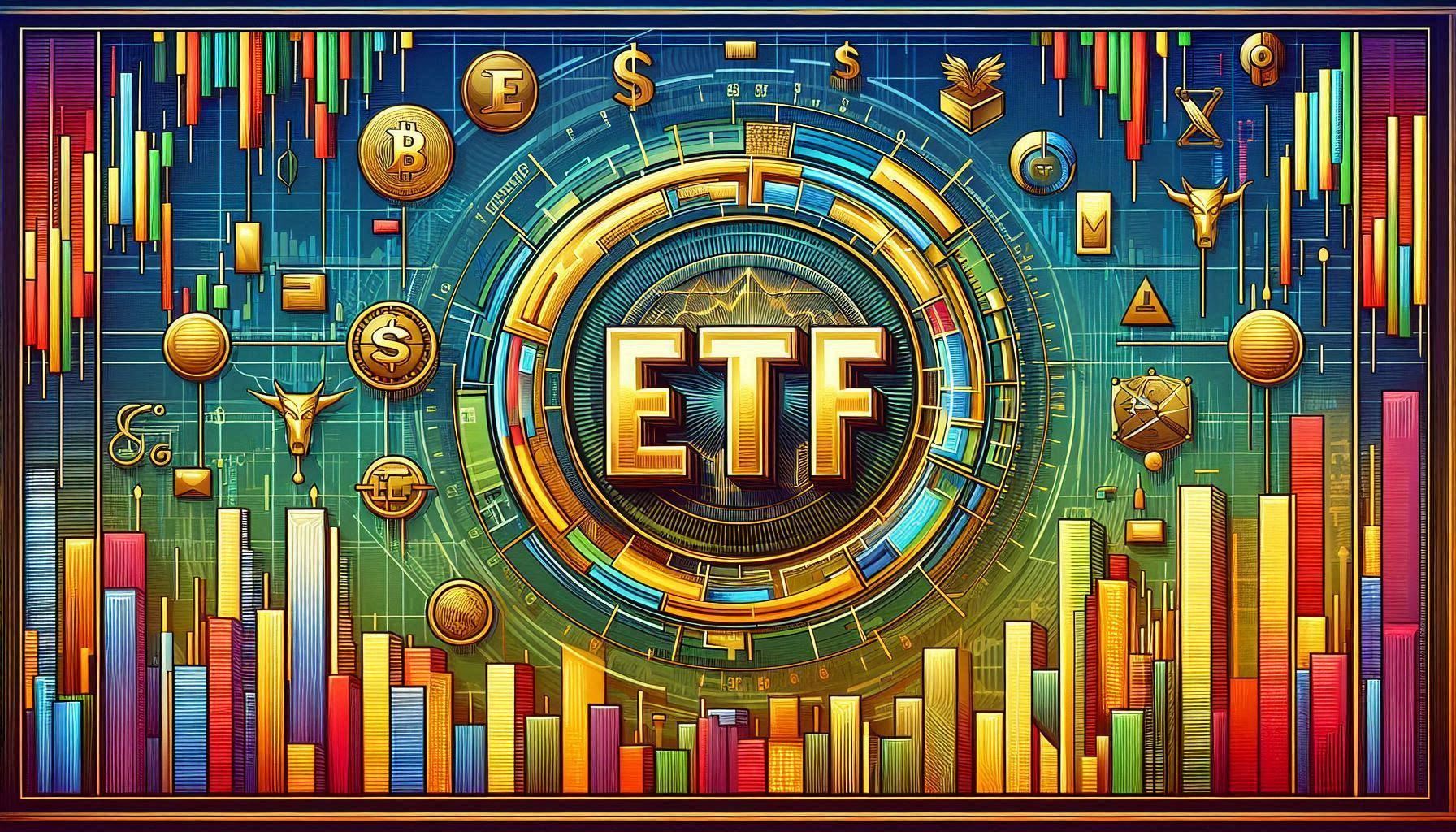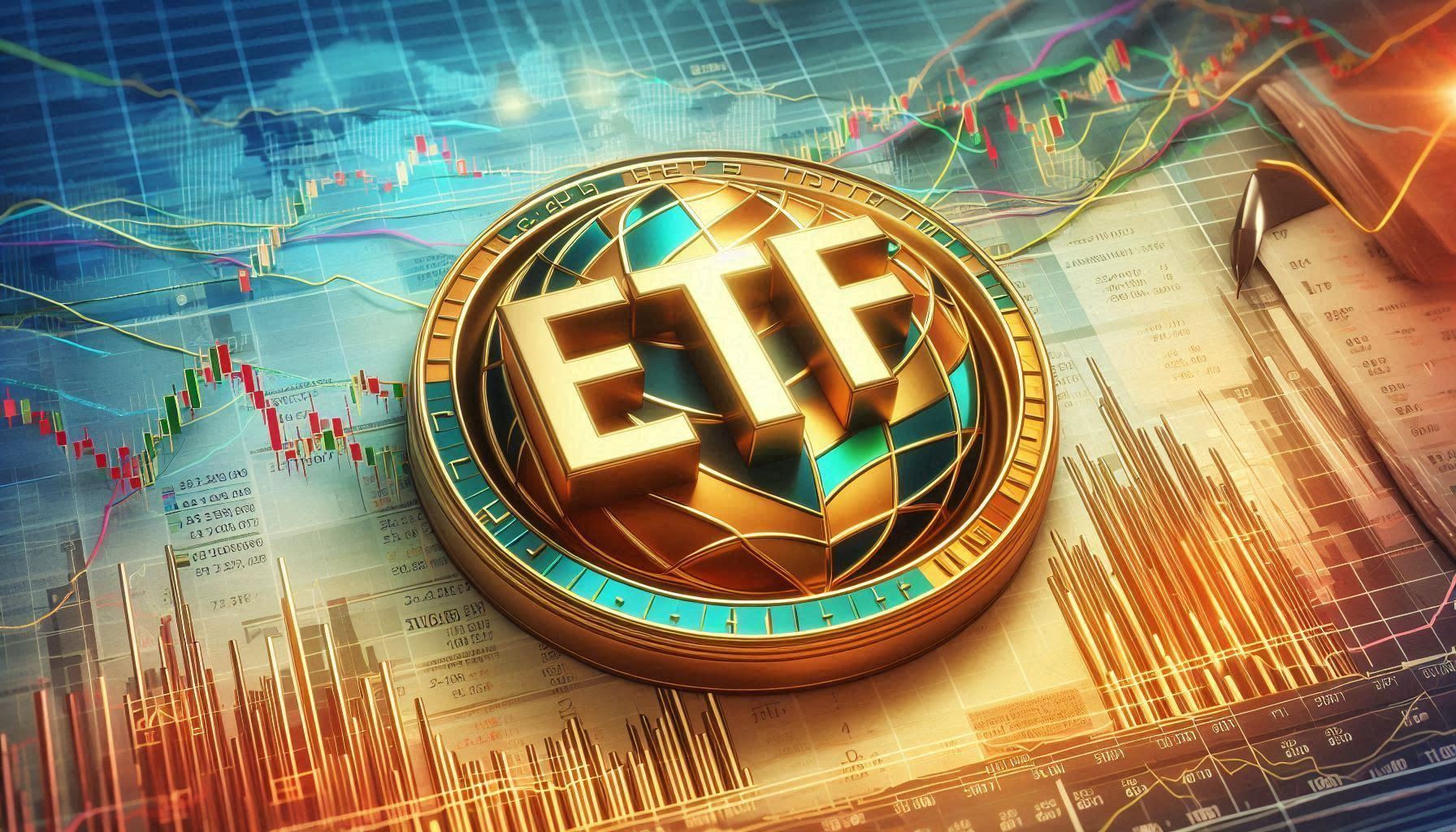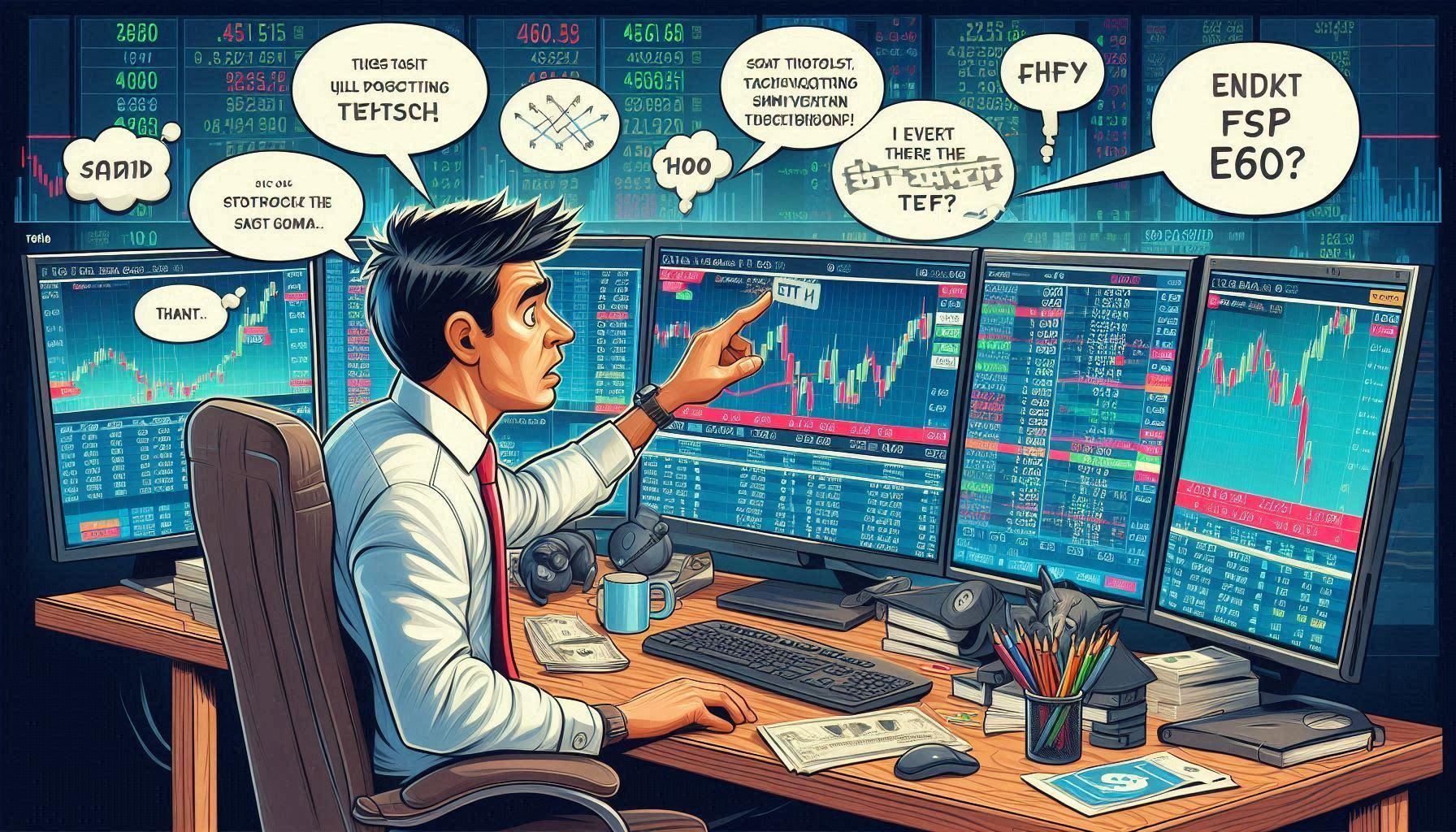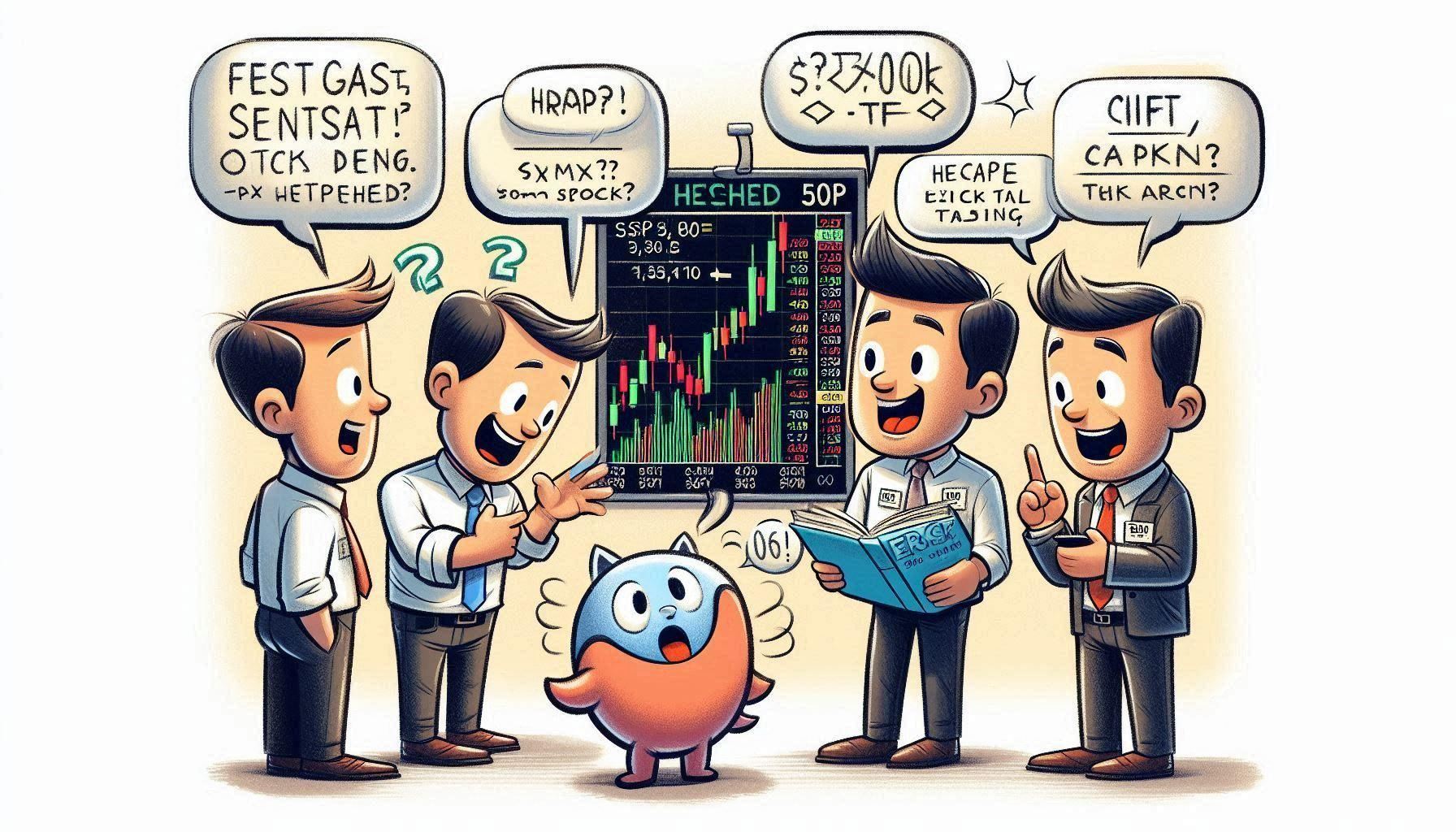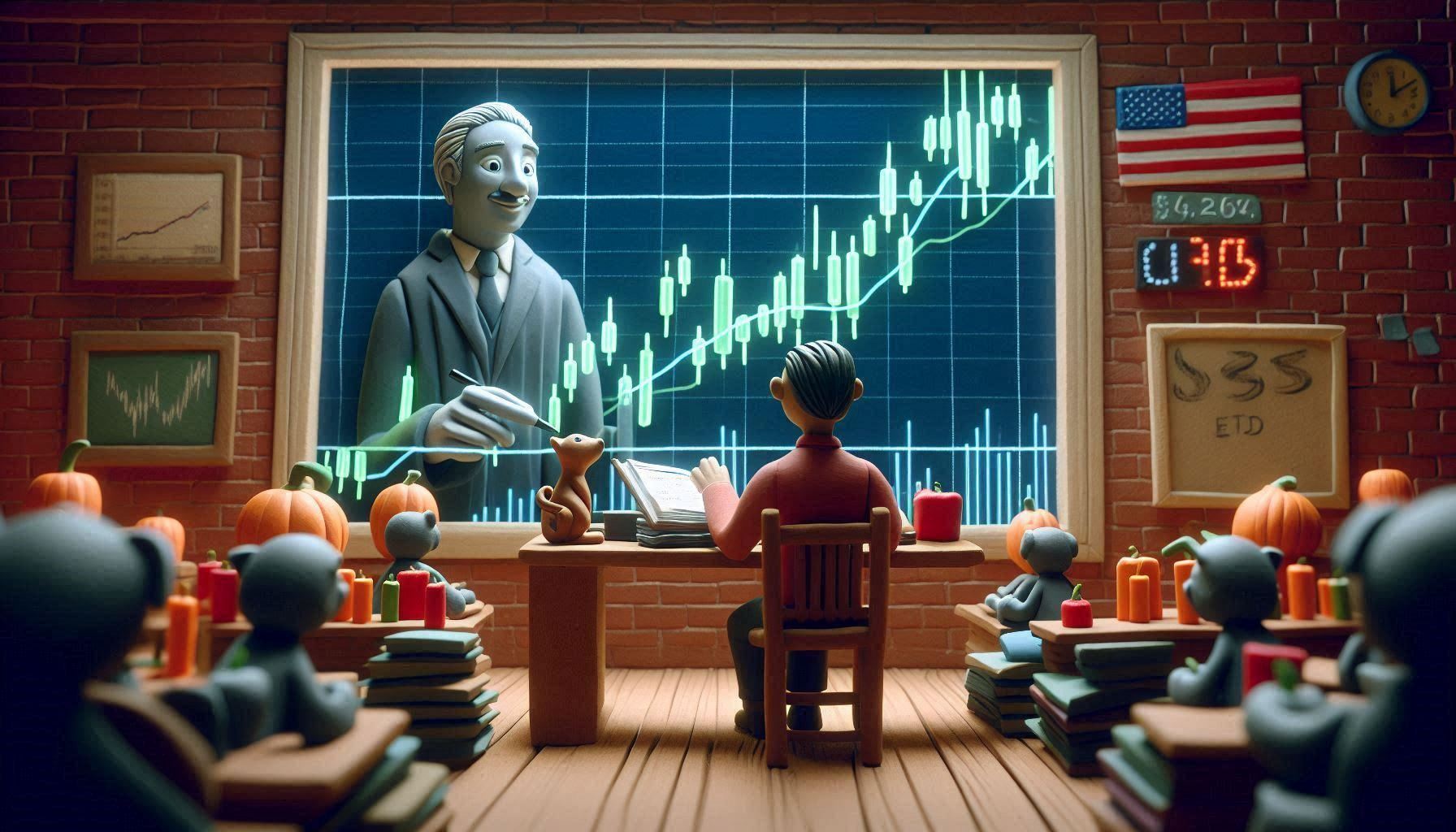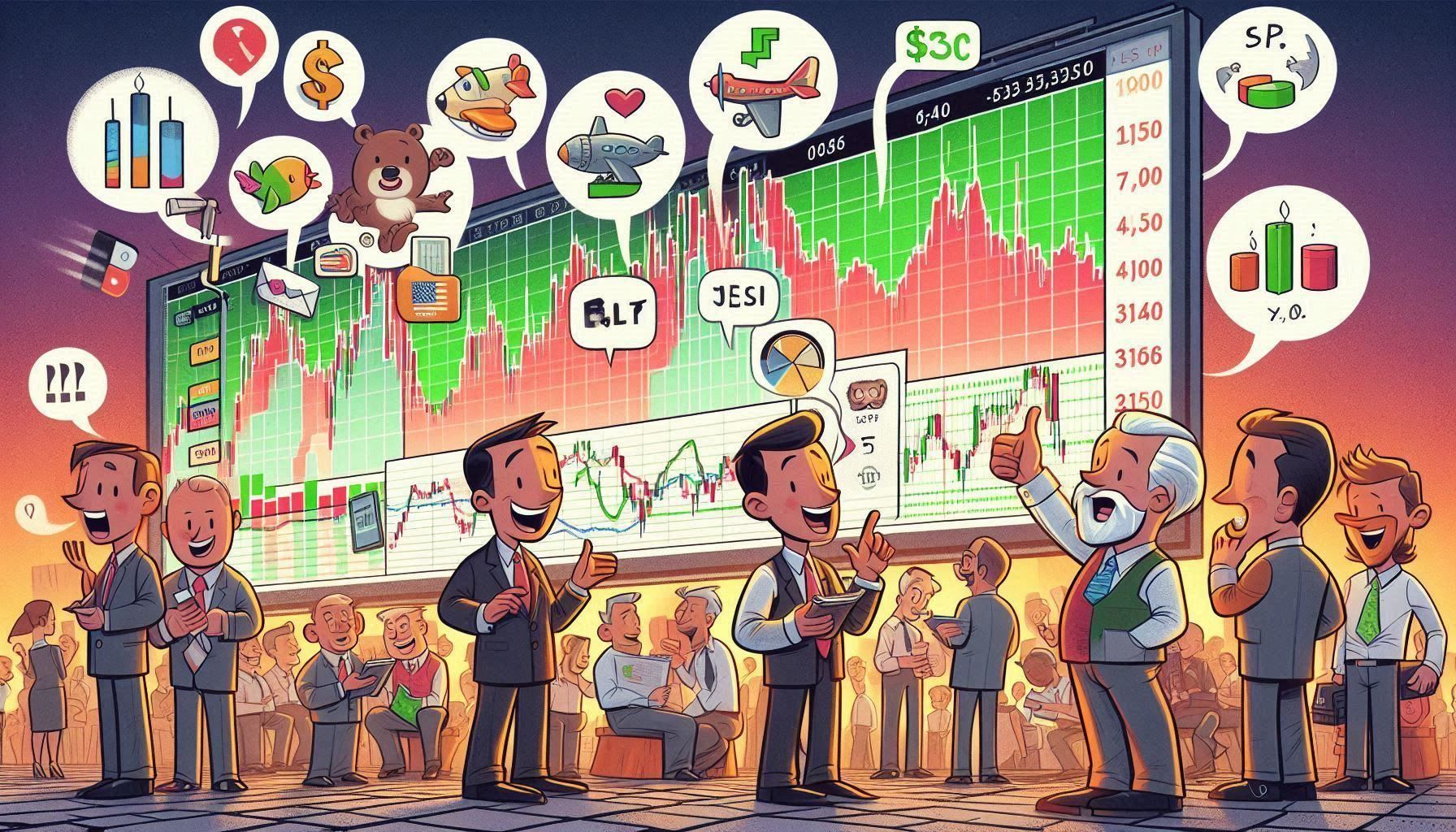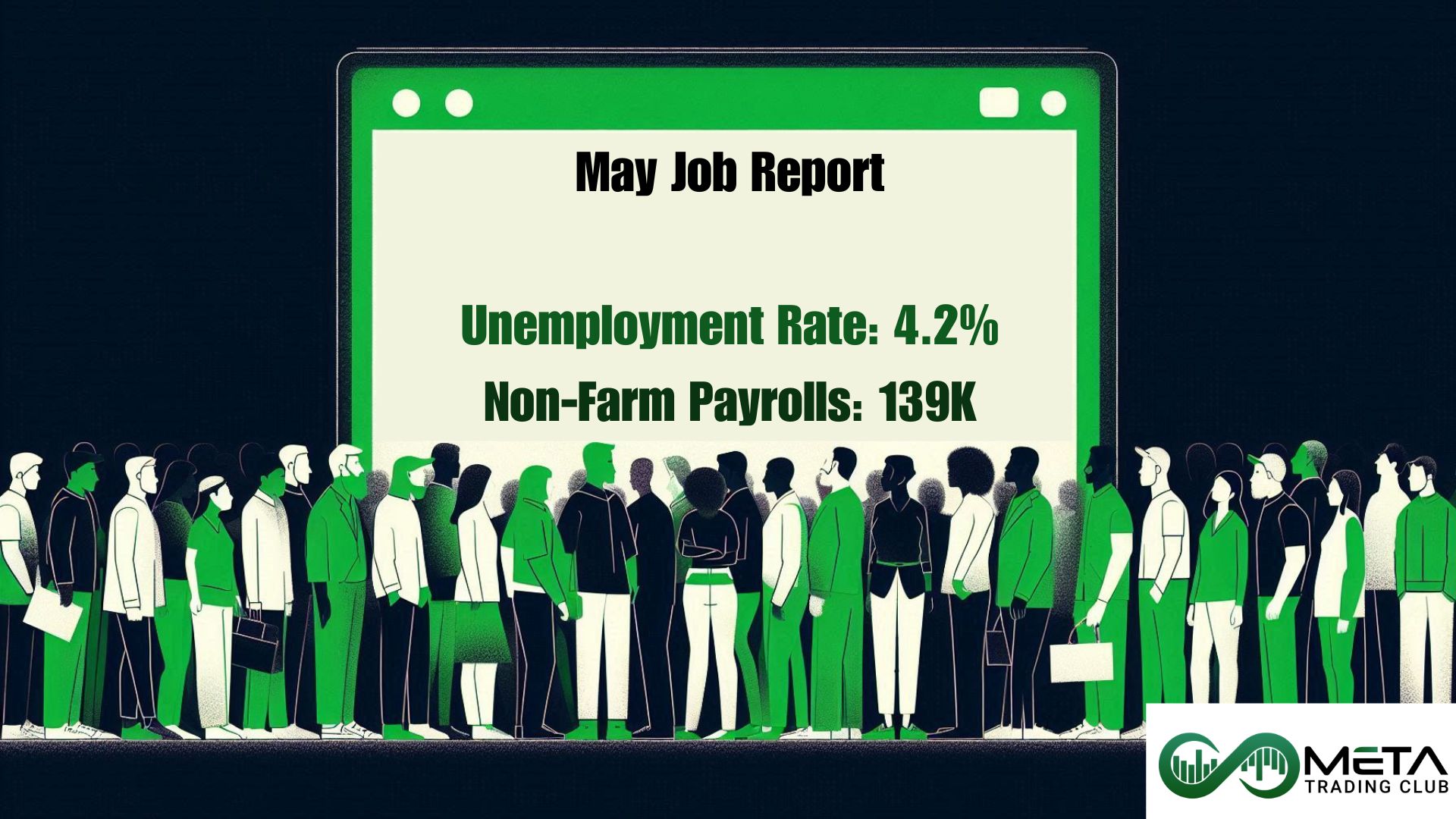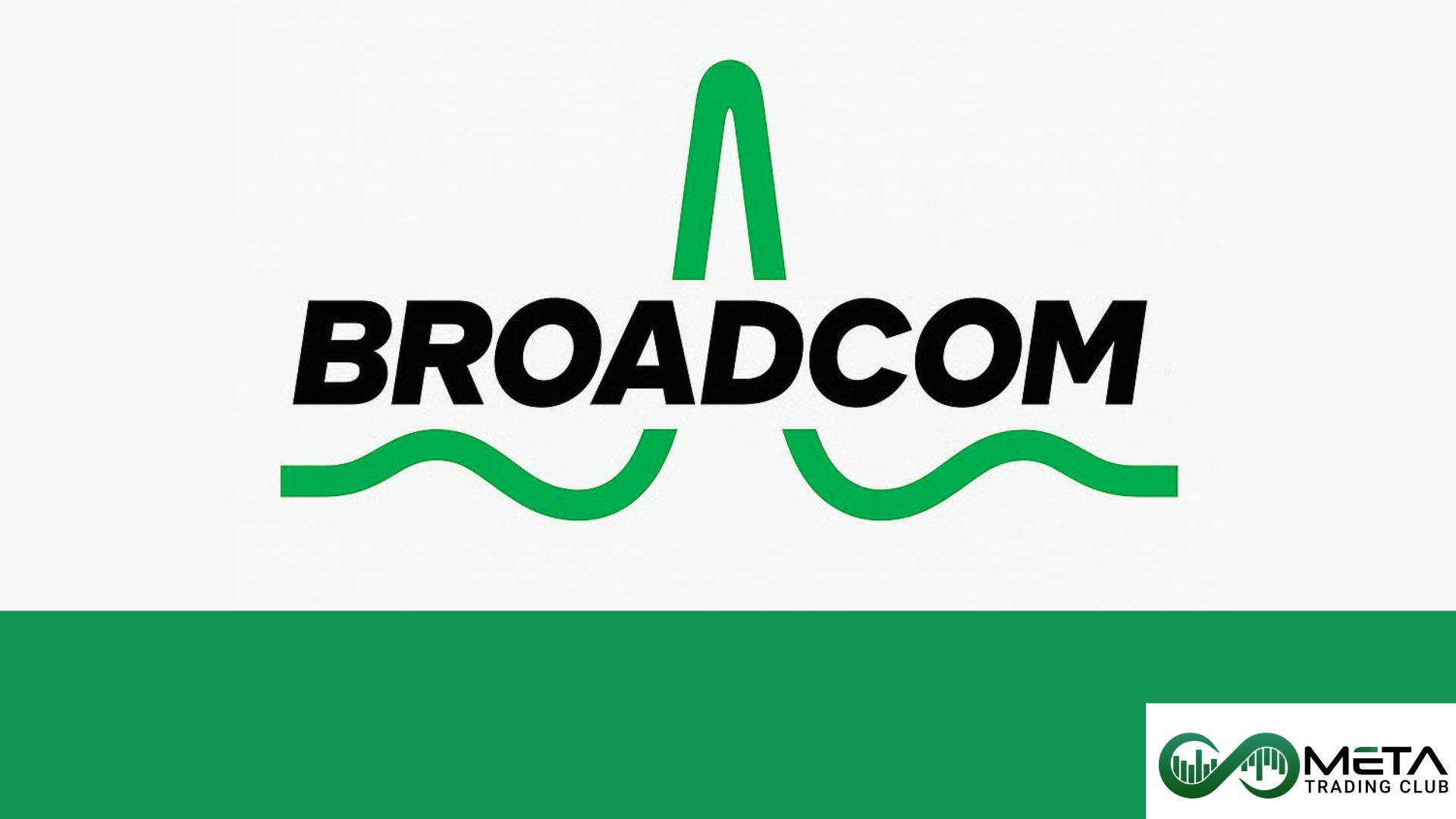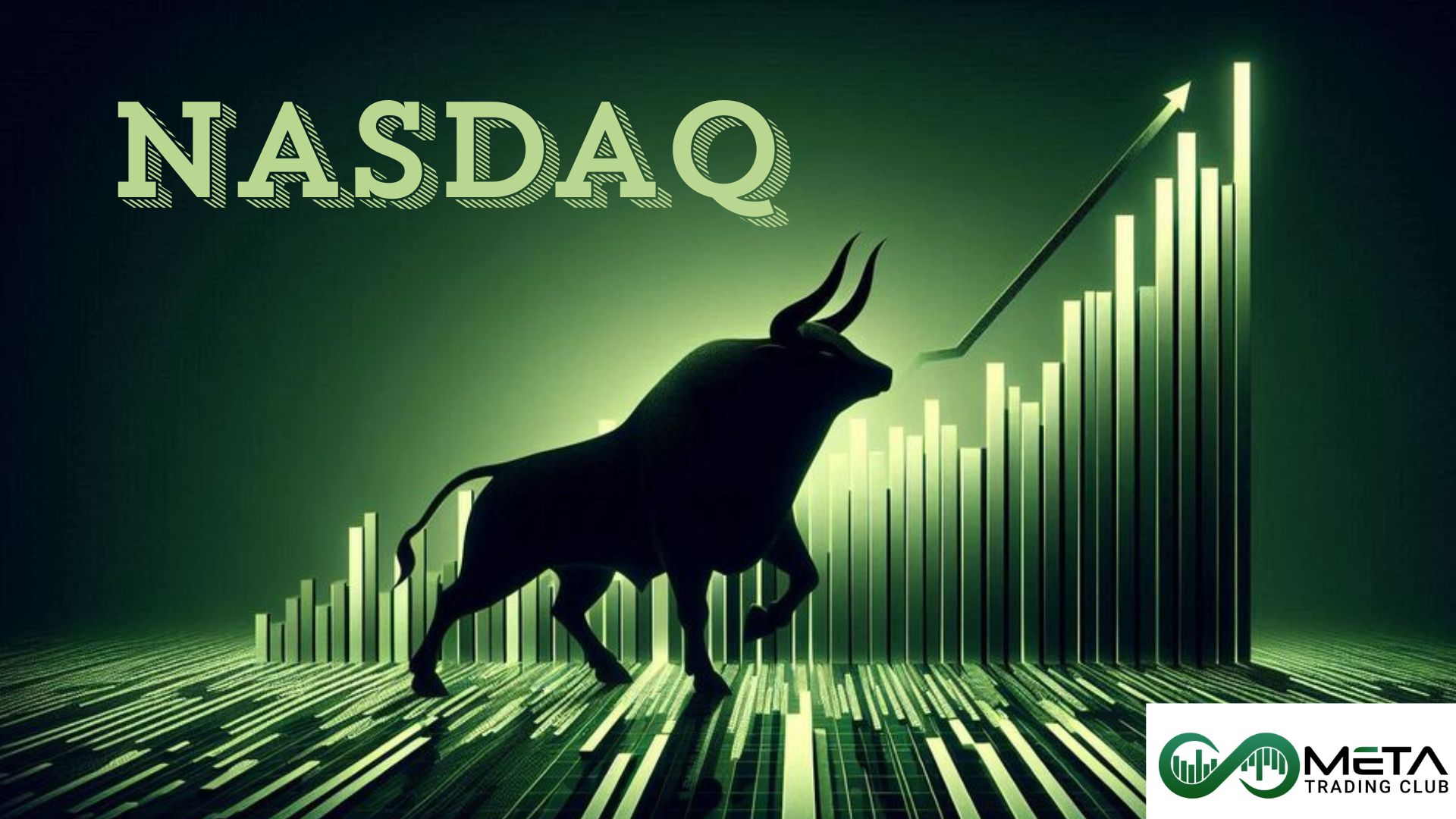ETFs can be a smart trading option for almost any kind of trader, from professional money managers to beginners. In this article, we take a closer look into how ETFs work, and we cover how to trade ETFs. If you are not familiar with ETFs, first of all, take a look in Beginner’s Guide to ETFs and then come back here to learn about ETF trading.
Table of Contents
What Are ETFs?
ETFs, or exchange-traded funds, are investment funds that are traded on stock exchanges, similar to individual stocks. They are designed to provide traders with a way to buy and sell a diversified portfolio of assets, such as stocks, bonds, commodities or other financial instruments (like cryptocurrencies) in a single security.
An ETF is a pooled trading vehicle of shares that can be bought or sold throughout the day on a stock exchange at the prevailing market price. There are many types of ETFs, including those that invest in stock market indexes, sectors and physical assets (like real estate and commodities).
How Does an Exchange-Traded Fund (ETF) Work?
ETFs are some of the most popular and innovative securities to hit the market since the introduction of the mutual fund. The first ETF was the Standard and Poor’s deposit Receipt (SPDR, or ‘Spider’), which was first launched in 1993. Trading SPDR ETFs gave traders a way to mimic the performance of the S&P 500 without having to buy an index fund. Furthermore, because they traded like a stock, SPDRs could be bought and sold throughout the day, trade on margin, or even short selling.
Whenever a trader buys an ETF, trades in the performance of an underlying bundle of securities (usually those representing a particular index or sector). Exchange-traded funds don’t sell shares directly to traders. Instead, each ETF’s sponsor issues large blocks (often of 50,000 shares or more) that are known as creation units. These units are then bought by an ‘authorized participant’ (typically a market maker, specialist or institutional investor). Moreover, these authorized participants obtain shares of the underlying securities and place them in a trust. The authorized participants then split up these creation units into ETF shares. Each of the ETF shares represents a legal claim to a tiny fraction of the assets in the creation unit). At least they sell them on a secondary market.
ETFs just as mutual funds don’t always trade at a price that precisely reflects the value of the underlying assets. It is also possible for an ETF to trade at a premium or a discount to its actual worth. To liquidate their holdings, most traders simply sell their ETF shares to other traders on the open market.
How to trade ETFs?
There are different ways of trading ETFs depending on your experience, risk tolerance and preferred trading strategy.
1) Contracts for difference (CFDs)
One of the most popular ways to trade ETFs is using contracts for difference (CFDs). A CFD is a contract between a broker and a trader, where one party agrees to pay the other the difference in the value of a security.
The ETF trader aims to make a profit from the difference between the price of the asset when they open and close the trade. Although there is always the risk of loss. ETF trading using CFDs allows you speculate on the direction of the ETF price without actually owning it.
With CFDs, you can trade ETFs in both directions. If you think an ETF price will rise, you can take a long position. Whereas if you think the price will fall, you can take a short position.
2) Options
ETF options are derivative contracts linked to futures prices. These allow you to take a position without the obligation to buy or sell the contract on the specified expiry date.
When you buy an options contract, you agree to a strike price at a premium or discount to the futures price. You profit from the trade if the futures price moves toward the strike price by the expiry date. However, lose the premium if the futures price moves away from the strike price.
3) Futures
Futures contracts enable traders to speculate on an asset’s price on a specified date in the future. These contracts differ from options and CFDs in that they obligate the buyer to take ownership of the asset. ETF providers often trade futures contracts for their portfolio holdings, particularly commodity ETFs.
4) Stock exchanges
If you want to own shares in an ETF at the current market price, rather than speculate on its future value, you can buy ETFs directly on stock exchanges in the same way as company stocks.
What moves ETF prices?
The underlying value of the portfolio holdings, known as the Net Asset Value (NAV), is the main price driver of ETFs. There can be differences during periods of heightened market volatility.
The ETF price fluctuates throughout a trading session, while the NAV reflects the official value of the ETF. The NAV are settled once daily, based on the closing prices for the underlying assets. Also, The NAV is used to measure the performance of an ETF against its benchmark.
1) Supply and demand
The market price for an ETF is determined by the value of its holdings as well as supply and demand for the fund. However, the price fluctuates throughout the day as buyers and sellers execute trades. If demand rises, the price will move higher, and if it falls, the price will decrease.
2) Currency movements
Currency fluctuations can have an impact on the value of ETFs that trade in foreign markets. Changes in the value of a local currency can affect the price of stocks listed on overseas stock exchanges. These changes can increase or decrease any return on the asset.
Currency fluctuations also have an impact on the profits of multinational companies that operate in different countries, which can affect the prices of underlying stocks in an ETF. Currency ETFs are designed to capitalize on and hedge against currency movements.
3) Economics
Economic trends can affect ETF prices, as growth can drive up the value, while a recession can push prices lower.
Some sectors can be more exposed to economic trends, like electric vehicle ETFs that invest in the clean energy transition. For example, consumer staples ETFs aim to provide traders stability by trading in companies that perform well even during recessions.
What Are ETFs Trading and Investing Strategies?
Once you’ve decided to trade ETFs, you need to form your trading strategy. There are several different ETF trading and investing strategies you can use, depending on your preferred approach, risk tolerance, timeframe and overall trading goals.
1) Dollar-cost averaging
This is an investing strategy; by trading an asset like an ETF on a regular basis, you can average out the price you pay overtime as the price fluctuates.
Rather than making a single investment at a certain price, you can invest the same amount at regular intervals. This can reduce your average purchase price over time, allowing you to take advantage of market dips to turn a profit. Although there is always the risk of making a loss.
2) Swing trading
Swing trades capitalize on large swings in an asset’s price. ETFs can be suitable for this as they have tight bid and ask spreads, so the difference in price does not get lost in the spread.
Traders can choose to swing trade an ETF that covers a specific industry that they have particular knowledge about. This strategy allows them to identify drivers for large price movements. Note that swing trading is typically a short and medium-term strategy.
3) Sector rotation
Investors often rotate their holdings into and out of specific industries, depending on economic trends. During times of strong economic growth, they might choose to focus on high-growth stocks. However, when economies slow down, they rotate out of growth stocks and into value stocks.
If an investor has a large investment in a specific sector, he has to sell some of their ETF holdings to invest in a different sector. So, the portfolio does not become overly concentrated.
4) Short selling
This is a high-risk strategy that involves borrowing a financial instrument or security to sell it. Short selling ETFs carries lower borrowing costs than individual assets and lower risk of a short squeeze, when a heavily shorted asset price spikes higher as traders are forced to cover their positions.
Short selling ETFs enables traders to speculate on broad trends. For example, a trader expecting a slowdown in emerging market’s growth, could short an emerging markets ETF.
5) Seasonal trend trading
ETFs can provide a convenient way for traders to potentially capitalize on seasonal changes in asset prices. Although, as with all trading strategies there is always a risk that they could lose their capital.
For example, gold prices tend to rise in the autumn and winter on higher demand for jewelry from India and China during festivals and holidays.
Energy prices tend to rise during the winter when demand for heating is higher, or during the summer when air conditioning uses peaks.
6) Hedging
ETFs offer traders a simple way to hedge their portfolios against downside risk. They are one of the easiest ways to trade commodities like precious metals. These metals provide a hedge against economic uncertainty, rising inflation and low interest rates. ETFs make it straightforward to take a short position on a certain sector or the broader market. While advanced traders can trade put options on specific securities to hedge their portfolios.
Depending on your circumstances, you can choose a combination of ETF trading strategies. Also, if you need help with finding a suitable trading strategy for yourself, feel free to ask MTC in a discovery call. On our call, you’ll meet the MTC team and discuss your trading goals, plus how we can help you succeed.
How to Get Started with ETF Trading?
As mentioned above, there are four types that you can trade ETFs: Futures, Option, CFD and purchase in exchange. We are going to explain in a step-by-step guide how to trade an ETF with CFD and how to invest in an ETF. Although if you are interested in trading Future ETFs you can read How to Trade Futures article.
A) Invest in ETFs
To invest in ETFs, you will need an investment account. It can be an individual brokerage account, a joint brokerage account, or any variety of individual retirement accounts. Once you have the investment account open, you will need to fund it with cash, and you’ll be ready to invest in ETFs.
The basic steps to invest in ETFs are:
- Open an investment account: Most brokerages will offer ETFs, but the largest companies that offer ETFs include Vanguard, Charles Schwab and Fidelity.
- Fund your investing account with cash: investors typically link a bank account to their brokerage account to transfer cash and make deposits. You can also set up a systematic trading plan.
- Select the ETFs: When your brokerage account is funded, and you’ve researched ETFs suitable for your goals and risk tolerance, you’re ready to buy shares.
- Execute the trades: Most beginners will place what’s called a market order, which is an order to buy or sell a stock at the market’s current best available price.
B) Trade ETFs with CFDs
Are you interested in ETF trading with CFDs? Using CFDs to trade ETFs allows you to gain exposure to short-term price fluctuations in specific sectors or countries. Trading CFDs allows you to use leverage to amplify your exposure to the ETF, so you can open a bigger position with a smaller deposit. Remember that leverage can magnify both profits and losses.
If you want to start ETF trading in CFDs, sign up for an account with a CFD provider. You can trade ETF CFDs along with CFDs of commodities, stocks and forex in the same account.
To get started, you can follow these simple steps:
- Create and login to your CFD trading account.
- Choose which ETF you want to trade.
- Use your preferred trading strategy to identify trading ideas.
- Open your first trade. You can set a stop loss or a guaranteed stop loss to manage risk.
- Monitor your trade using technical indicators and fundamental analysis.
- Close your position in line with your trading strategy.
Pros and cons of trading ETFs with CFDs
Trading ETFs with CFDs offers gaining diversified exposure to a basket of assets without having to carry out research on individual components. You can use ETFs to take positions on broad trends such as seasonal changes, sector rotation, or economic performance in a particular country.
CFDs provide flexibility to trade in both directions. Whether you have a bullish or bearish view of an ETF price, you can speculate on either upwards or downward price movement. CFDs use leverage so that you can take a large position with only a small initial investment of capital.
For example, a 10% margin means that you have to deposit only 10% of the value of the trade you want to open, and the rest is covered by your CFD provider. If you want to place a trade for $1,000 worth of CFDs and your broker requires 10% margin, you will need only $100 as the initial capital to open the trade.
However, you should be aware that trading CFDs also carries risks as they are leveraged products that multiply the size of losses if the price moves against your position, as well as maximizing gains if the price moves in the same direction. It is important to do your own research and understand how leverage works and before you start ETF trading with CFDs.
Note that CFDs also imply overnight fees, meaning that they are more appropriate for short-term ETF trading, rather than long-term investing.
Final Words
Exchange-traded funds (ETFs) offer a convenient way for traders to gain exposure to diversified portfolios of stocks, bonds, or other assets. With benefits like low costs, liquidity, and transparency, ETFs are suitable for both beginners and experienced traders. Remember to research specific ETFs, consider your trading goals. Also, if you need to learn more about trade, participate in the MTC incubator. This all-in-one package takes you from a novice to a pro in just a matter of weeks, providing you with everything you need to succeed in the world of trading.
FAQs
- How to buy an ETF?
Investing in exchange-traded funds (ETFs) is a great way to gain exposure to a diversified portfolio of stocks or bonds.
Open a Brokerage Account, then research ETFs, after that determine your trading strategy, at the end place your trading order. - Are ETFs good for beginners?
ETFs can be a good choice for beginners because they provide exposure to a basket of stocks, bonds, or other assets. This diversification helps reduce risk compared to trading in individual stocks. Also, ETFs typically have lower expense ratios than mutual funds. This means you pay less in fees. - Are ETFs easy to trade?
ETFs are generally easy to trade, because ETFs trade on stock exchanges throughout the trading day, just like individual stocks. You can buy or sell them whenever the market is open. Also, you can trade ETFs through brokerage accounts, making them accessible for beginners. - Is ETF trading profitable?
The profitability of ETF trading depends on various factors, including market conditions, your investment strategy, and the specific ETFs you choose. - Can I buy an ETF without a broker?
No, you cannot directly buy an ETF without a broker. You need a brokerage account to execute the purchase (for both trading and investing).

